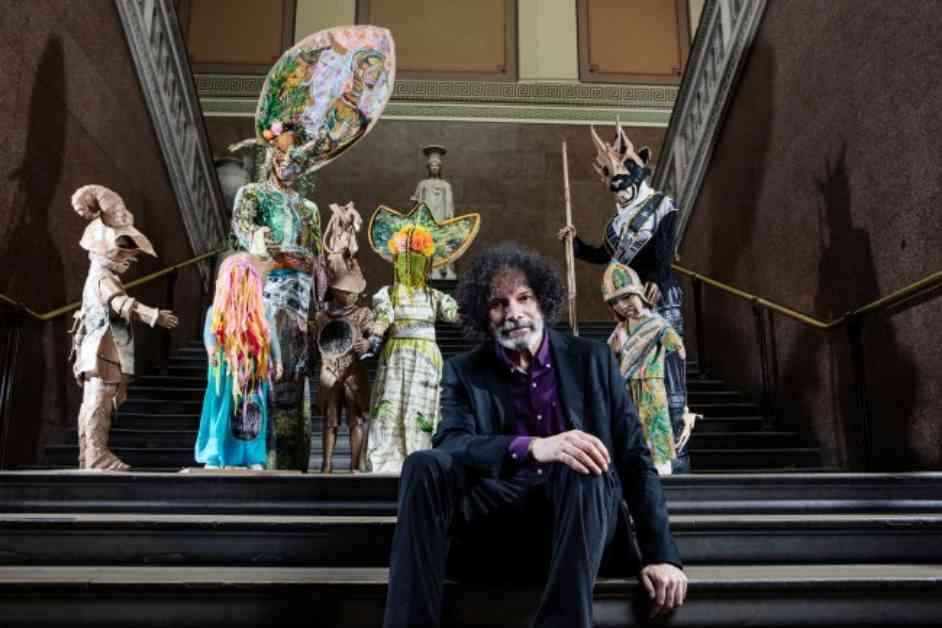Exploring the Artistic Vision of Hew Locke: A Creative Journey into Identity and Politics
Celebrated Guyanese British artist Hew Locke has embarked on a groundbreaking artistic journey that challenges conventional notions of identity, empire, and colonial history. Locke’s latest exhibition, “what have we here?” at the British Museum, is a testament to his two-year exploration of the museum’s vaults alongside his partner and studio curator, Indra Khanna. This transformative experience has culminated in a thought-provoking collection that delves deep into Britain’s imperial past, focusing on its involvement in Africa, India, and the Caribbean.
The Unconventional Exhibition
Unlike traditional exhibitions, Locke’s showcase defies the norms of display methods by creating an open-plan layout that invites visitors to forge their own connections. Objects and artworks are scattered throughout the space, hanging directly from plastic cages or encased in cabinets, offering a back-of-house feel that prompts reflection on the presence of items in museums. Divided into four distinct areas, the exhibition brings together historical objects from the British Museum’s collection, loans, and Locke’s own commissioned works, such as the striking oversized sculptures of “The Watchers, 2024.”
A Glimpse into Dark Histories
One of the exhibition’s highlights is an exuberant 1780 painting by William Jackson depicting a slave ship headed toward West Africa, shedding light on the Royal African Company’s pivotal role in the transatlantic slave trade. Locke’s deliberate curation aims to challenge viewers to confront the darker aspects of history often concealed behind seemingly beautiful objects. From Maxim machine guns to Benin Bronzes, each piece tells a tale of violence, colonization, and resistance that shapes our understanding of empire and power dynamics.
Personal Reflections and Collective Dialogue
On a personal note, Locke’s journey into the depths of the British Museum’s archives has been a poignant exploration of his own complicity in the legacy of empire. Through his artistic lens, he invites viewers to question their own role in perpetuating or challenging historical narratives. Locke’s ten watcher figures symbolize a Greek chorus judging both the audience and himself, urging us to reflect on our relationship with the past and its implications for the present.
In a society grappling with the complexities of decolonization and historical accountability, Locke’s exhibition serves as a catalyst for dialogue and critical thinking. By encouraging visitors to engage with the stories behind each object, Locke prompts us to reevaluate our understanding of history and the narratives that shape our collective consciousness. As we navigate the complexities of our shared past, Locke’s artistic vision offers a beacon of hope for a more nuanced and inclusive future.












